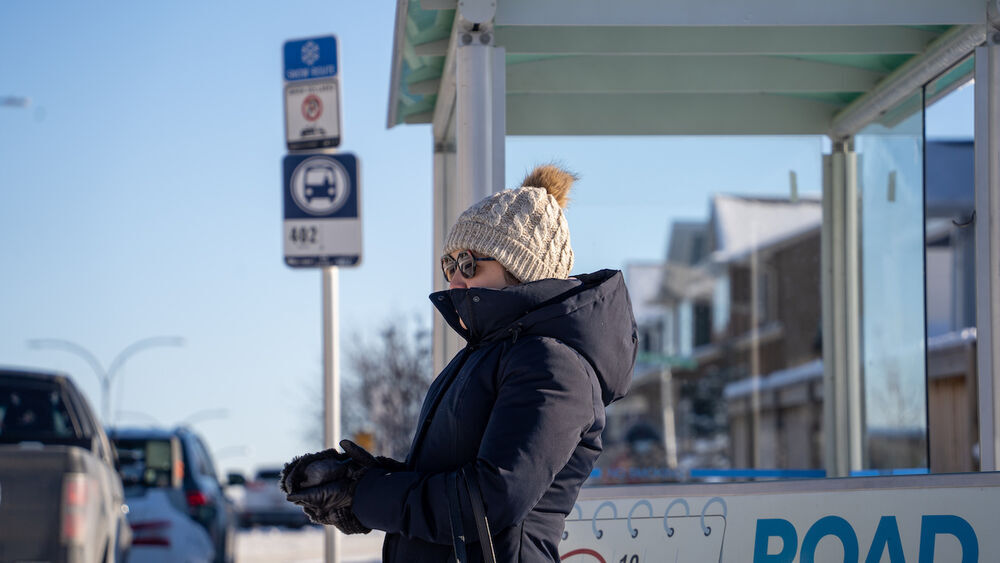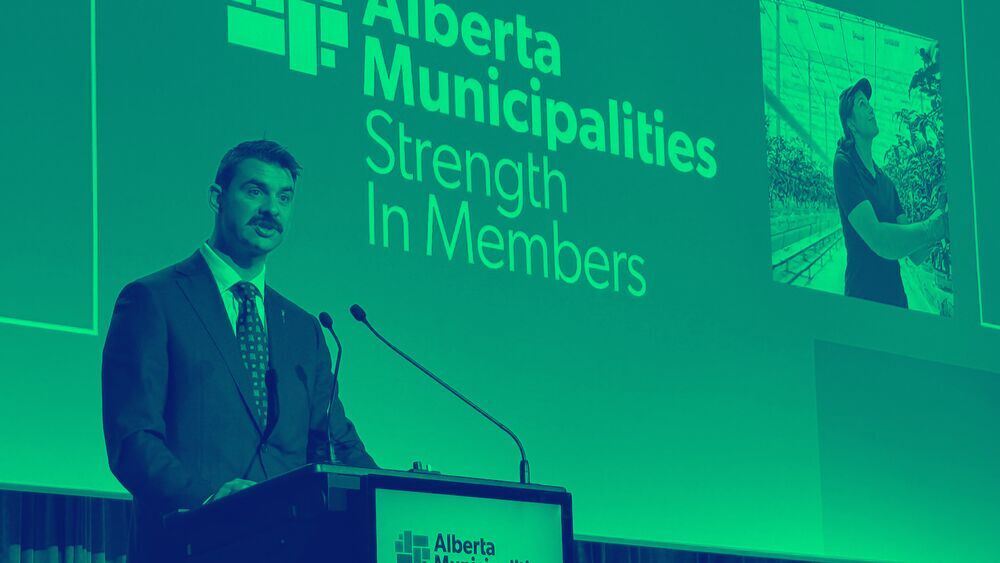
Photo: iStock/powerofforever
Calgary theatre faced a racial reckoning in 2020. Now what?
To stay in Calgary, BIPOC artists need real change.
Support independent Calgary journalism!
Sign Me Up!The Sprawl connects Calgarians with their city through in-depth, curiosity-driven journalism. But we can't do it alone. If you value our work, support The Sprawl so we can keep digging into municipal issues in Calgary!
In June 2020, the world was experiencing a reckoning. George Floyd’s death at the hands of the Minneapolis police inspired Black Lives Matter protests all over the world, despite the logistical complexities of protesting during a pandemic. Calgary was no exception, and local conversations began around defunding police.
Theatre was experiencing a reckoning, too.
On June 6, the Stratford Festival, one of Canada’s most august theatre institutions, stunned the community by publishing a statement addressing the BLM protests and acknowledging their own role in perpetuating systemic racism.
“As an organization, we continue to learn how to do the work, and understand our complicity in unjust systems,” the statement read. “As a company we have upheld white supremacy in the past. It must be dismantled.”
The company then handed their social media feeds over to several Black artists, who told harrowing stories of the racism they faced in the theatre industry around the hashtag #inthedressingroom. Artists from across the country chimed in with their own stories.
Seeking to capitalize on this momentum and to shed a light on issues specific to Calgary’s theatre community, a group of theatre artists came together on July 8 to host BIPOC Panel YYC, an online panel discussion featuring nine BIPOC (Black, Indigenous and people of colour) theatre professionals speaking about their experiences in the theatre and arts communities in Alberta.
BIPOC artists often feel unwelcome
Throughout the discussion, many of the artists addressed the narrative that BIPOC artists must leave the prairies and go to larger centres like Toronto and Montreal if they expect to make any kind of living off of their craft. At one point, moderator Makambe K. Simamba asked the participants to raise their hands if they feel like they must leave Calgary “in order to have a full artistic practice.”
As each hand went up on the screen, Simamba said, “Everybody watching, I just want you to take this image in.”
In the weeks that followed, Kunji Ikeda, a performer based in Calgary, approached one of the BIPOC Panel YYC organizers—Jenna Rodgers, artistic director for Chromatic Theatre in Calgary—about one thing they could do to address the many-headed problem of systemic barriers to artists of colour in their community.
Ikeda had recently been working with Calgary census data to create a monologue in which he rattles off statistics about artists. The figure 35%—roughly the percentage of Calgarians that are part of a visible minority—had stuck in his head. That number contrasted with the percentage of BIPOC professionals employed in Calgary’s artistic community, which was closer to 15% according to 2017 Calgary Arts Development Authority (CADA) data.
.
I didn’t expect to have the momentum that it has had, or the response.
“It shouldn't be news to anyone doing this work that the demographics on stage quite clearly reflect the demographics in your audience,” said Ikeda. “That shouldn't be news to anyone. It's not news to anyone who tracks stats, that looks around in an audience, that [they’re] missing out on a lot of demographics."
“I mean, it's so obvious: if you want more people, you should do different things.”
On August 1, Rodgers and Ikeda, along with a group of artist friends, sent out a letter to theatre companies, education institutions, and funding bodies across Alberta asking that they commit “to seeing our civic landscape more equitably reflected in our professional landscape: a minimum of 35% BIPOC and 50% female or non-binary people in paid, professional positions.”
This group of artists selected a target of 2024-2025 for achieving these aims, in order to align with Calgary’s census cycle, as well as the CADA survey of the artistic sector.
It shouldn’t be news to anyone doing this work that the demographics on stage quite clearly reflect the demographics in your audience.
In their letter, the group—calling themselves the 35//50 Initiative—outlined some benchmarks for success: organizations seeking to be included in the initiative should track and publish their numbers after each season, and simultaneously work to make changes internally so that in three years their numbers will have moved closer to reflecting Calgary’s overall population.
The letter also outlines proposed consequences of failure to do so: “At this time, our hope is that an organization that does not meet a minimum of 30% BIPOC—lower than our shared belief—see its access to funds restricted.”
“I didn't expect to have the momentum that it has had, or the response,” Rodgers confessed. “To me, this was like a group of pals who came together to be like, ‘Do better, and do better over five years,’ and then everyone was like, ‘Whoa, we better do better!’ Like, oh, you were listening?”
How the theatre landscape is changing
The theatre community was listening, as it turns out. Of the 142 institutions 35//50 reached out to with their letter—59 in Calgary and 83 in Edmonton—65 have published responses outlining their commitment to 35//50’s aims. (All of these institutions and their responses can be found on 35//50’s website.)
This unsought success has come with some challenges. The first hurdle to the initiative has been finding a baseline from which to measure success. They have found a natural collaborator in YYC Theatre Stats, a project begun in 2018 by Rodgers and Kristen Padayas, the associate producer at Chromatic Theatre, to track and publish BIPOC representation in Calgary’s theatre community. YYC Theatre Stats now operates in partnership with CADA, which pays Rodgers and Padayas for the data they collect.
“When we started [YYC Theatre Stats] initially,” Padayas recalled, “it was just me and Jenna emailing people, and looking at play programs and websites, and people's descriptions of themselves—public information that they were disclosing about their own race.” During the early days of the project, the team were used to receiving resistance and even suspicion from theatre companies they reached out to with questions about YYC Theatre Stats.
“No BIPOC people were suspicious of why we were doing this, I will say that,” she added.
The work isn’t meant to be prescriptive. We don’t pretend to have the answers for every organization.
Rodgers finds it encouraging that the tone around tracking statistics around race and gender seems to have changed with the 35//50 initiative: “Previously, so much of our statistics gathering were with the individual artists, or through programs that we would source and then Google and Google and Google and Google.”
Now, she says, most of the companies they’re working with, particularly larger ones, have a staff member who’s responsible for tracking the information required for participation in 35//50.
“We can email them directly, ‘Here's what we have for your numbers, can you fact check us?’ and they fact check us; they don't ask any questions. If you look back to 2016, company members were like, ‘Why should we provide this information?’”
An 'honest and earnest way' to grow community
So far, so good. However, once armed with statistics about where the theatre community is now, this still leaves the much thornier question of how to get theatre companies to where they want to be.
“One of the biggest question marks we have is about educational institutions,” Rodgers noted, because while theatre companies can make changes to their hiring practices, training institutions are at the whims of who applies.
Funding bodies also represent a dense and complicated ecosystem that’s deeply intertwined with systemic inequities. Consequently, this is also a growth area recognized by 35//50. “In the long term,” their letter said, “we are also calling for a fundamental shift in how artistic organizations and projects are funded. We are offering a similar call to sponsors, investors, and funding bodies to uphold a similar mandate by 2024-2025, and offering proactive solutions for them to shift their processes.”
Some institutions have reached out to the 35//50 organizers asking whether they are expected to fire staff members in order to achieve the desired percentage of BIPOC staff.
“That is interpreting in such bad faith,” said Ikeda. “The work isn’t meant to be prescriptive. We don’t pretend to have the answers for every organization.
“The initiative is an invitation for each organization to ask within themselves, ‘What is an honest and earnest way that we can grow our community, that stays truthful to who we are, and recognizes the listening and learning that was so buzzworthy half a year ago?’”
No BIPOC people were suspicious of why we were doing this, I will say that.
For better or worse, the stage of listening and learning is past. Ikeda encourages theatres to “put something forward, even if it’s messy.” Learning how to be resilient to criticism and even failure—the risk of “stepping in it,” as Rodgers puts it—is a necessary part of this process.
However, it will be hard to tell whether theatre institutions are ready to demonstrate the value of all their listening and learning until 2021-22 theatre season announcements start to be released.
While many companies have flirted with online programming and some are experimenting with small-scale returns to live theatre, we may not know the extent to which 35//50 has been embraced until theatres return to a post-pandemic version of business as usual, which may not be for several years—a potential obstacle to the initiative’s 2024-2025 timeline.
There are, however, some encouraging signs of life beneath the snow.
A step in the right direction
The organizers of 35//50 have heard from high schools that have revamped their theatre seasons to be more inclusive. They have also had encouraging conversations with theatre development institutions like Theatre Alberta about how to make 35//50’s work more sustainable.
Achieving numbers closer to 35//50’s benchmarks won’t solve systemic inequities in theatre. Even if each organization that signed onto 35//50’s letter achieves its targets in three years’ time, it’s just one step in the right direction. Nonetheless, the organizers have reason to be hopeful that they are making the ground more fertile for a new generation of equity-seeking voices.
Jesse Del Fierro, a member of 35//50’s organizing committee, said that one sign of success would be that emerging artists leaving theatre education programs “are able to enter the industry feeling like there’s a space for them, and not that they still have to carve out their own space.”
In other words, if a room full of prairie-raised and trained BIPOC artists are asked whether they feel the need to move away to get respect and recognition in their field, they’ll at least have to think about it.
Miranda Martini is a writer, editor and musician in Calgary. She's also The Sprawl's membership editor.
Did you appreciate this story? Become a Sprawl member today!
Sign Me Up!The Sprawl connects Calgarians with their city through in-depth, curiosity-driven journalism. But we can't do it alone. If you value our work, support The Sprawl so we can keep digging into municipal issues in Calgary!



